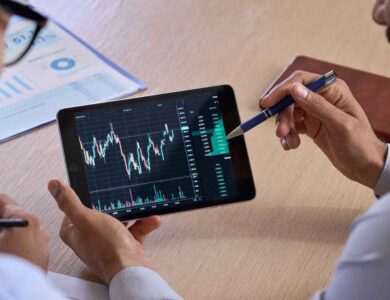Why Precious Metals Trading is Resilient in Economic Downturns

The trading of precious metals has always been considered a safe bet for those looking to hang onto their money during economic downturns. When stock markets get choppy and currencies are volatile, precious metals such as gold and silver have a history of either maintaining or increasing the value. The reason why lots of investors rely on precious metals trading as a safe haven is this resilience.
A store of value is one of the main reasons why precious metals are one of the strongest assets as the economy turns down. Precious metals are tangible assets that have intrinsic value compared to paper currencies or stocks. Because they are not directly linked to the functioning of a particular economy or financial system, they are not at direct risk of inflation or currency devaluation. The reason is that as traditional investments, such as stocks or bonds, lose their value, there is usually an increased demand for precious metals, as better investment alternatives.
Especially gold has received its reputation as a safe haven asset. When the economy is unstable, investors want to protect their wealth and they flock to gold. Naturally, its value increases in uncertainty (recessions, geopolitical tensions, etc). Since gold has historically proven itself as a way of preserving value long term it can be a trusted choice when the sky is falling and the lights are going out.
In the precious metals sphere, silver also plays an important role on downturns, but unlike the stable price of gold, the silver price tends to fluctuate more violently. Apart from investor sentiment, silver is used in most industrial applications and the price is affected by the supply and demand dynamics that are going on outside of what investor sentiment is doing. However, as is the case with gold, silver too is considered a store of value and tends to do well ahead of times of economic uncertainty. One of the reasons silver is attractive to traders to diversify/portfolio is, the price of silver follows that of gold; when the price of gold goes up, silver tends to go up as well.
This is because precious metals trading is resilient and it is also backed by their global demand. Precious metals are in demand, regardless of what’s going on in an economy in any given country. In addition, precious metals are held in reserves by central banks, governments and investors everywhere, which forever support their value. During times of economic stress this level of demand offers a stability unseen in other asset classes.
It also favors precious metals trading due to its liquidity. Unlike real estate or other physical assets, you can buy and sell precious metals quickly in different markets around the world. Their ease of access is a tempting option for traders who need to respond quickly to market changes.
Other investments may fail at uncertain times, but precious metals trading is a constant investment. Their value-added, global demand and outstanding performance history make them a good choice for a stable asset class during economic downturns. Trading in precious metals offers traders a chance to hedge against risk and protect their wealth even through rainbows of bad times.
Fiat currencies have value commensurate with inflation being reasonably low. So precious metals, come into this equation. For example, gold is a store of value, has been used for centuries. Its worth isn’t uniquely tied to any currency or government, meaning it’s a worthwhile investment during high inflationary periods. The price of gold increases as the value of the dollar or other currencies decreases. Gold is a hedge against the eroding value of paper money, which is why investors rush to the metal.
Trading precious metals provides investors a way to guard their portfolios against inflationary pressures. In general, as inflation runs high, precious metals demand surges as an investor hedge, pushing prices higher. This is especially true for gold and silver, considered real assets that can have real value that doesn’t slowly disappear over time. When inflation kicks in, trading with such metals can be a profitable deal as you stand the chance of making some cash from price increase.
Gold is often touted as the primary safe-haven asset, however, silver is much more affordable and accessible to more investors. While its price can be more unstable than gold’s, it has a habit of rising when inflation hits. If the investor is looking for a way to protect his wealth but does not want to invest in higher-priced gold, precious metals trading in silver can be a good option.



